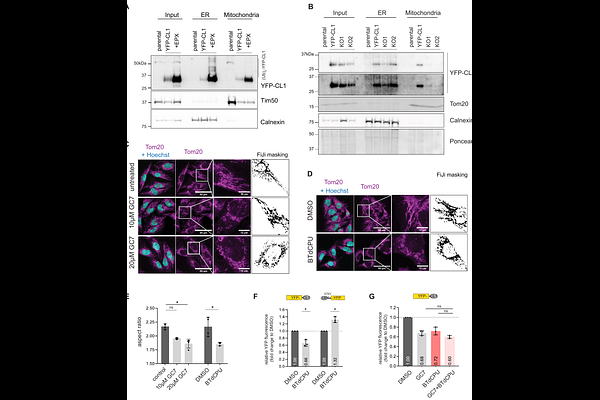Mitochondria serve as a Holdout Compartment for Aggregation-Prone Proteins hindering Efficient Ubiquitin-Dependent Degradation

Mitochondria serve as a Holdout Compartment for Aggregation-Prone Proteins hindering Efficient Ubiquitin-Dependent Degradation
Gierisch, M. E.; Barchi, E.; Marogna, M.; Wallnoefer, M. H.; Ankarcrona, M.; Naia, L.; Salomons, F.; Dantuma, N. P.
AbstractThe accumulation of protein aggregates has been causatively linked to the pathogenesis of neurodegenerative diseases. In this study, we have conducted a genome-wide CRISPR-Cas9 screen to identify cellular factors that stimulate the degradation of an aggregation-prone reporter protein. Our findings revealed that genes encoding proteins involved in mitochondrial homeostasis, including the translation factor eIF5A, were highly enriched among suppressors of degradation of an aggregation-prone reporter. Conversely, endoplasmic reticulum (ER)-associated ubiquitin ligases facilitated degradation, indicating opposing roles for these cellular compartments in the clearance of aggregation-prone proteins. Genetic or chemical inhibition of eIF5A led to the dissociation of the aggregation-prone substrate from mitochondria, which was accompanied by enhanced degradation through ER-associated ubiquitination. The presence of an aggregation-prone, amphipathic helix that localized the reporter to mitochondria was crucial for the stimulatory effect of eIF5A inhibition. Additionally, the steady-state levels of -synuclein, a disease-associated protein containing an amphipathic helix that mislocalizes to mitochondria, were reduced upon eIF5A inhibition. We propose that mitochondria behave as a holdout compartment for aggregation-prone proteins, keeping them out of reach of ubiquitin ligases that target them for proteasomal degradation. Therefore, preventing mitochondrial localization of aggregation-prone proteins may offer a viable therapeutic strategy for reducing their levels in neurodegenerative disorders.